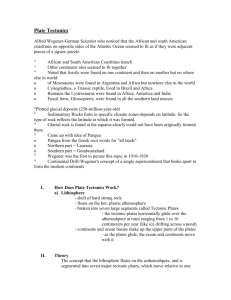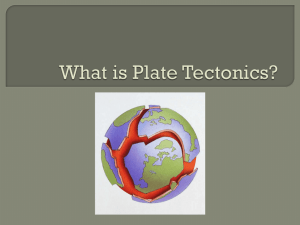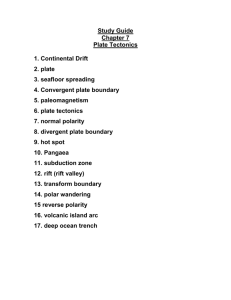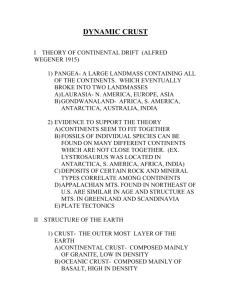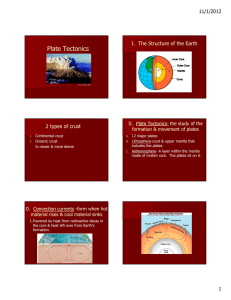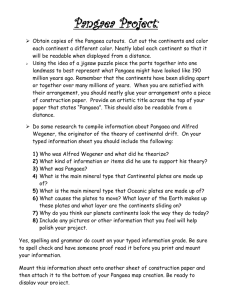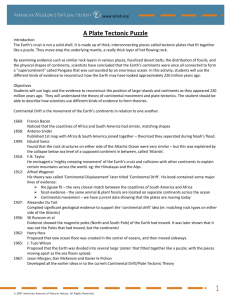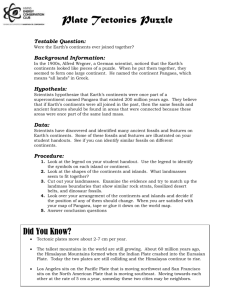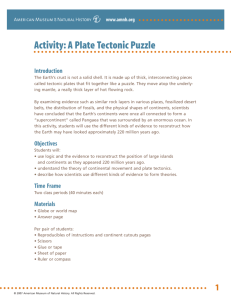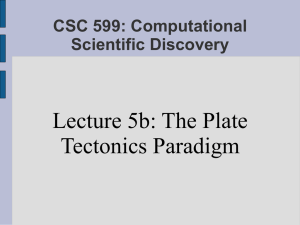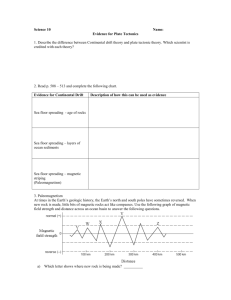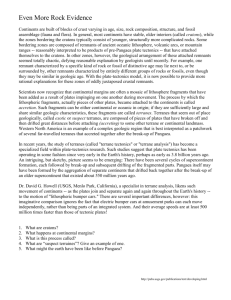WEGENER`S EVIDENCE*** Date Period
advertisement
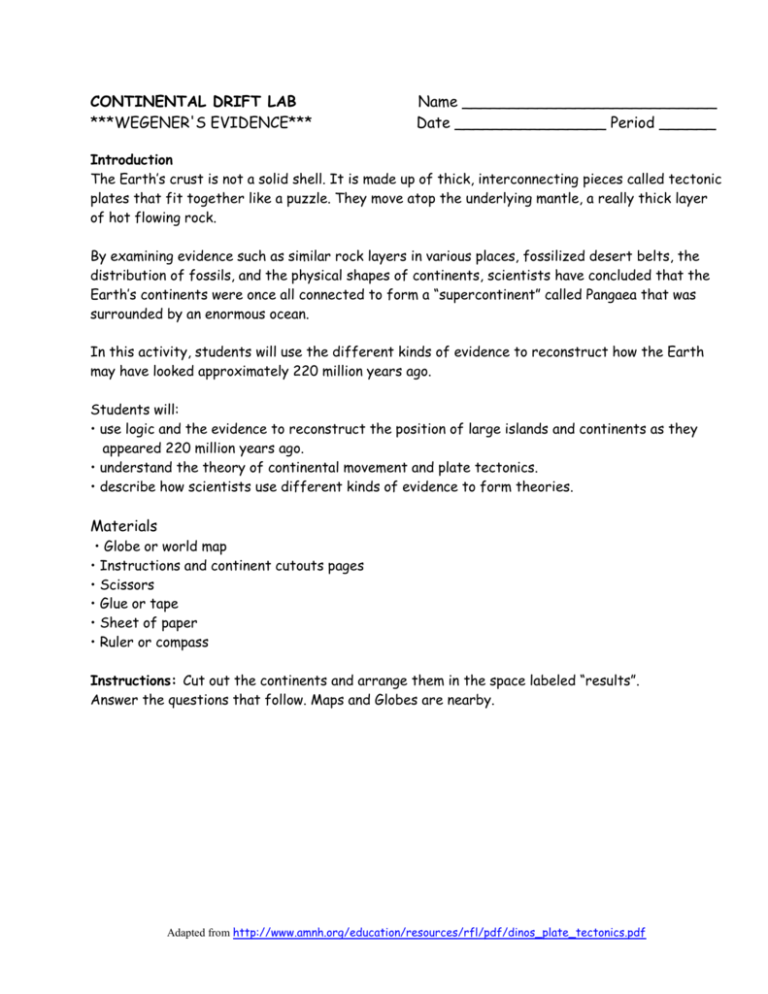
CONTINENTAL DRIFT LAB ***WEGENER'S EVIDENCE*** Name ___________________________ Date ________________ Period ______ Introduction The Earth’s crust is not a solid shell. It is made up of thick, interconnecting pieces called tectonic plates that fit together like a puzzle. They move atop the underlying mantle, a really thick layer of hot flowing rock. By examining evidence such as similar rock layers in various places, fossilized desert belts, the distribution of fossils, and the physical shapes of continents, scientists have concluded that the Earth’s continents were once all connected to form a “supercontinent” called Pangaea that was surrounded by an enormous ocean. In this activity, students will use the different kinds of evidence to reconstruct how the Earth may have looked approximately 220 million years ago. Students will: • use logic and the evidence to reconstruct the position of large islands and continents as they appeared 220 million years ago. • understand the theory of continental movement and plate tectonics. • describe how scientists use different kinds of evidence to form theories. Materials • Globe or world map • Instructions and continent cutouts pages • Scissors • Glue or tape • Sheet of paper • Ruler or compass Instructions: Cut out the continents and arrange them in the space labeled “results”. Answer the questions that follow. Maps and Globes are nearby. Adapted from http://www.amnh.org/education/resources/rfl/pdf/dinos_plate_tectonics.pdf Questions 1. What three kinds of evidence support Wegner’s theory that South America was at one time joined with Africa? Be specific! a. ___________________________________________________ b. ___________________________________________________ c. ___________________________________________________ 2. Where does Greenland join Pangaea? Be specific. ______________________________ ________________________________________________________________ 3. What dinosaur is found on almost every continent?_____________________________ 4. Since a dinosaur cannot swim, explain how a fossil can be found on all continents? ____________________________________________________________________ 5. It is generally considered that dinosaurs live in warm climates, yet fossil remains are found in Antarctica. How can this be explained?______________________________________ ___________________________________________________________________ 6. Where does Africa join Europe? ___________________________________________ 7. What is the evidence? ___________________________________________________ ____________________________________________________________________ 8. Do plates move horizontally, vertically, or both?_________________ 9 What do plates float on?_______________________ 10. What type of rock are oceanic plates made of?_______________________ 11. What type of rock are continental plates made of?_______________________ Adapted from http://www.amnh.org/education/resources/rfl/pdf/dinos_plate_tectonics.pdf RESULTS N E W S Adapted from http://www.amnh.org/education /resources/rfl/pdf/dinos_plate _tectonics.pdf Land Masses to Cut Landmasses Key



